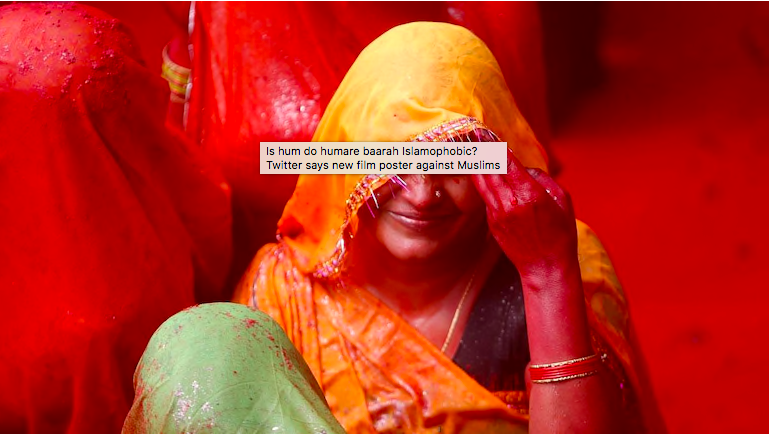Ghunghat in Bharat: Why Hindu women were made to go Laapata behind veils


The enforced debate on similarities between Ghoonghat and Hijab / Burka has been ongoing and at times Taqia Stalwarts like Magic Akhter stoke the flames, when he is feeling particulary left out. A few days ago, a picture of a woman wearing traditional Saree with a part Ghoonghat walking on a beach with a background of bikini clad women went viral. Half of the people were in awe and the other half got another oppostunity to bring in false comparisons between Ghunghat and Hijab. For once, I will agree with these mud stirrers, as both have roots in Islam.
According to Wikipedia, the word ghoongat, ghunghat or ghunghta is derived from Avagunthana (Sanskrit) meaning veil, hiding and cloak and Oguntheti (Prakit) to cover, veil over and hide. The concept of some sort of covering was there in ancient times. However, the veil was used only by royalty ladies, as there is no evidence of common citizens using it in any manner in Bharat. This system was never for non-royalty and was never present in the lives of common women. Additionally, it was not widespread like it became after the advent of invaders in Bharat, and it was never enforced.
If we observe our country from north to south, we will see that in the Southern States, the Ghoonghat system is non existing. When the invaders came to Bharat, they almost always came through the Punjab and then made there way as far inside as they could, but seldoms made their way beyond a certain point towards the South. All the states which were ruled by Hindu Rajas do not have any existence of Ghoonghat. If it was a pre Islam tradition, then it would be present in some way, shape or form all over the country, which it is not.
The Ghoonghat was made more mainstream in Hindu families to protect their women from the evil, roving reach of Muslim invaders. They convulated our culture, our way of living and eating, and messed with our customs and traditions.
Things like Ghunghat “pratha” or domestication of pigs by some Hindu Communities which started during Islamic Rule because thee was a need to protect women from getting raped, and from brides to be abducted from their wedding processions. And these can still be seen as they are deeply rooted into our society. Bringing this exercise to the Indian mainland during their conquests, the Rajputs were among the most dominant groups to practice the Ghoonghat system because they faced the monstorisities of the invaders at a very high level. The custom of Hindus getting married during the day was also made prevalent during that time, as there were numerous attempts of abduction of Brides as the groom’s family would be o the passage to their own village after the Pheras. Additionally, the invaders would coninuously come up with rituals to humiliate the locals and rape Hindu women. The Hindus communities started to regularly slaughter a pig during weddings and prayed to Bhagwan Vishnu’s Vrahwa Avatar to protect their women. They would also make a necklace out of pig’s tooth and put it around the neck of the brides. They would also make the girls walk through the blood of a slaughtered pig to dissaude the followers of Islam from pursuing her.
All of these and some other traditions were the need of the hour at that time, and have unfortunately continued in many parts of Northern India due to lack of conversation. So yes, there are many similarities between the Hijab and Ghoonghat as it is practiced today, as both are a result of enforcement due to world’s most peaceful religion.
DISCLAIMER: The author is solely responsible for the views expressed in this article. The author carries the responsibility for citing and/or licensing of images utilized within the text.
